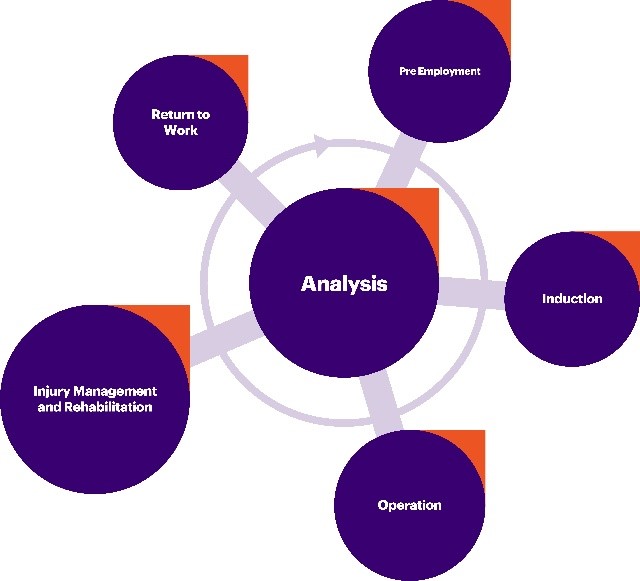Mark Heaysman of Longitude6 gives the potential key to unlock benefits gained from the use of technology. If your company’s belief system revolves around the theory that tech will provide the complete solution, this article is for you.
Over the past five years or so, the hard sell has been the probability of a 30% reduction in workplace musculoskeletal claims providers of technologies and services have used to attract new business. Where this number originated from is untraceable, much like the data to support it; yet, it seems to be the benchmark claim for many products and services related to technology promoted to prevent and reduce these kinds of injuries globally.
If this were true, the projection over five years at 30% reduction would have reduced claims to just under 25%. Have any of these users experienced such prolonged savings? While individual experiences vary, statistics from the governing bodies are not supporting this drop.
For example, Workcover Western Australia reported that from 2017-2018, 62% of musculoskeletal injury claims were for injuries caused by body stress, acquired while performing repetitive tasks. While the number of instances was less by 15% (Safework Australia) from 2000-2014, each claim’s cost has risen significantly.
Further Details of Rising Costs
Between 2000–2001 and 2013–14, the median time lost for a serious claim rose by 33% from 4.2 working weeks to 5.6. Over the same period, the median compensation paid for a serious claim rose by 94%, from $5,200 to $10,100. After considering wage inflation over the period, the adjusted median compensation paid increased by only 23%.
This is not great news as far as reducing overall costs of claims is concerned for the companies experiencing higher insurance premiums, workers having to take time off for recovery, and additional labor costs for replacement contingencies. Of course, insurance companies have to turn a profit, hence the rise in claim values to offset the number of claims falling.
What are the Questions that Businesses Must Now Ask?
- Will the cost of reducing injury claims be financially reflected if I introduce technology or service?
- Why, after adopting technologies and services, do these numbers still exist?
The short answer is ‘no’ and ‘because one technology or service on its own may not deliver the result you wish,’ and here’s why.
As long as the focus remains driven by numbers and siloed approaches to workplace initiatives, the human element, where most of the expense lies, is not factored into that stated claim of a “30% reduction from using our product or technology”.
Considering the rise in recovery times from musculoskeletal injuries is at 33%, it negates the magic 30% reduction in total costs resulting from claims. That is only the direct cost of replacing the injured worker (not including options such as engaging consultants, changing providers of rehabilitation or onsite services, changing insurance policies and brokers, buying the latest technology and management system, introducing pre-employment processes, and fitness for work trainers).
With that in Mind, What Questions Should You Ask?
- How do we make a change?
- What can we do differently to achieve a sustainable reduction with injuries to our most valuable asset, our people?
We invest in resources and capital on compliance, buildings, and workplace equipment and maintenance to be more productive and save costs, weighing up all the options and measurables to ensure optimal return on investment.
So, why not when we invest in initiatives around injury reduction?
The only difference is we need to consider that the commodity in question is the most variable factor imaginable, a person, a human being. Aging, different lifestyles, decision-making processes, and life stories are crucial stressors in the evaluation process yet are sometimes ignored even if they are known.
With workplaces becoming more fast-paced, demanding, and structured in their processes, the system is trying to fit this variable into a fixed environment – people into tasks.
We need to create a workplace that accounts for this fact. Our people within their work environment are complex issues, all relying on environment, decisions, training, knowledge, self-management, and discipline to create that safe workplace dream.
If we approach each element of our injury and cost reduction model with the lens of each informing the other, we could achieve our goal of a sustainable reduction in injury and cost.
Doing the same with the services and activities we provide, deciding the roles our people undertake, and most importantly, the information that informs those decisions and initiatives completes the process.
 This idea is not new; in fact, our world is reliant on this very concept – an ecosystem, each element informing and benefiting the next part.
This idea is not new; in fact, our world is reliant on this very concept – an ecosystem, each element informing and benefiting the next part.
In the workplace, this can and is most efficiently done using technologies, learnings, and technical and professional skills to create a symbiotic and effective ecosystem approach.
Before an employee is hired, the learnings and knowledge gained in that process must be carried through that person’s work-life cycle. Using the right data can deliver such a result.
We call it the Delta Method of analysis to develop the Longitude6 Ecosystem approach. It can be called our ecosystem; it should be called your ecosystem.
What could be achieved when using technologies to inform our ecosystem? Maybe, that mystical 30% or why not 100%? That should be the objective, and it can be achieved.





